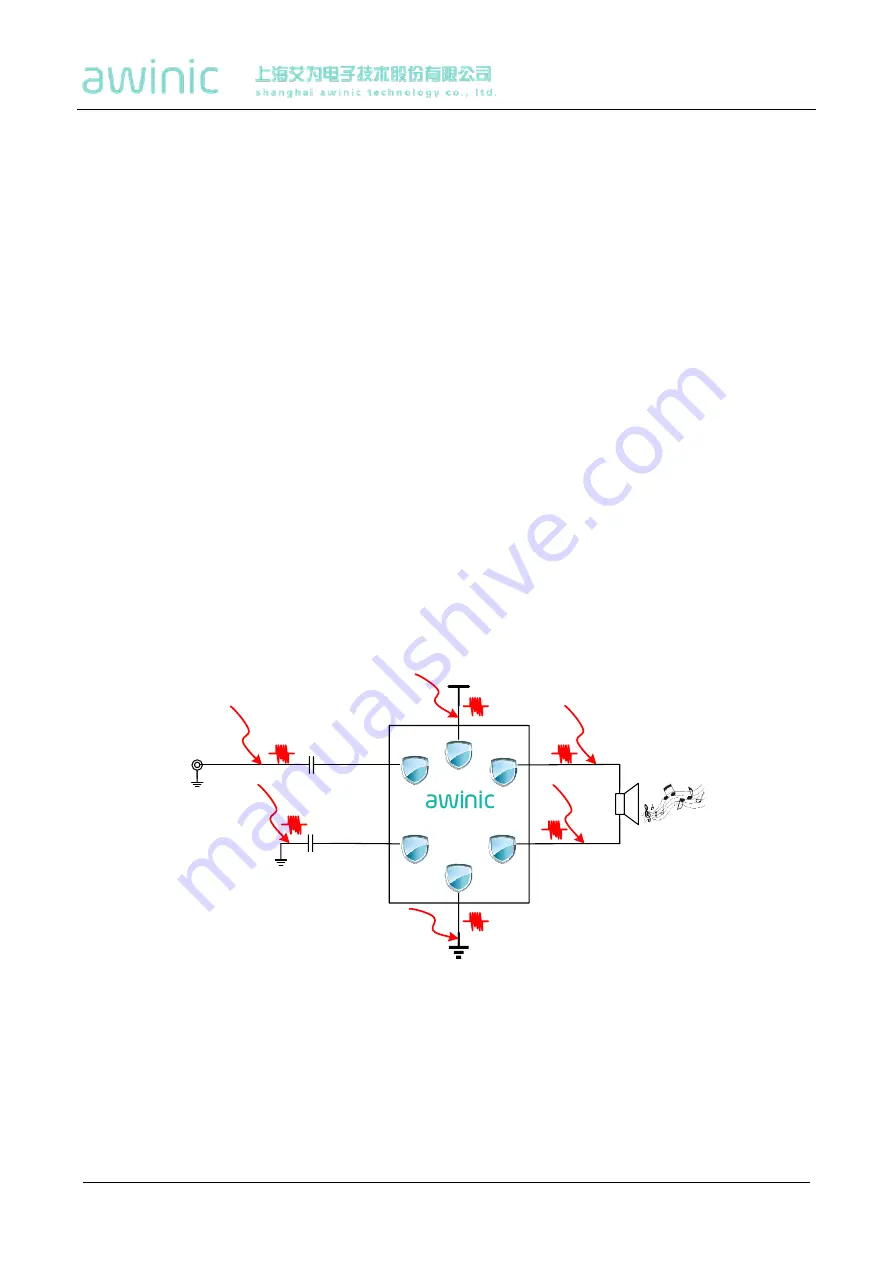
AW8155B
Jul. 2022 V1.3
www.awinic.com
18
COPYRIGHT ©2022 SHANGHAI AWINIC TECHNOLOGY CO. LTD.
For conventional audio power amplifiers, when the input resistor Rin and the input capacitor
Cin mismatch,
will greatly affect the audio power amplifier PSRR indicators, in the case of 24dB gain, PSRR will be weak-
ened to 46dB or so if the input resistance and Capacitor with 1% mismatch. PSRR will be weakened to 28dB
or so if the input resistance and input capacitance mismatch with 10% mismatch, when the power fluctuations,
it is easy to produce audible TDD Noise.
In order to enhance the audio power amplifier PSRR in the input resistance and input capacitance mis-
match case, AW8155B features a unique conduction noise suppression circuit, making the power amplifier to
maintain a high PSRR value even in
the
input resistance, the input capacitance deviation of 10% or more, this
greatly inhibits the generation of conducted noise.
Radiation noise suppression
Input traces, output traces, horn loops, and even power and ground loops are likely to be subject to RF radi-
ation interference in the audio signal module, longer input traces and output traces similar to the antenna,
especially vulnerable RF radiation effects.
The reasonable PCB layout can reduce the influence of RF radiation in the design, such as shorten the line
length of input and output as much as possible; audio devices should be shielded and far away from the RF
antenna, maintain the integrity of the device to audio signal pathway; to increase the small bypass capacitor
RF signals in the sensitive nodes. However, in practical applications, PCB layout is difficult to fully consider
the influence of RF radiation on the audio signal path, and some RF energy will still be coupled to the audio
signal path to form audible TDD Noise. Therefore, AW8155B features a unique RF radiation suppression
circuit, a shielding layer inside the chip, effectively prevent high frequency energy into RF chip, to ensure that
the drive single of the amplifier provided to the speaker will not be affected by the antenna RF radiation, thus
avoiding the antenna RF Radiation caused by TDD Noise.
VDD
GND
VOP
VON
INP
INN
Cin
AW8155B
Cin
Figure 15.
RF Energy Coupling Diagram
NCN
In audio application, output signal will be undesirable distortion caused by too large input and power supply
voltage down with battery, and clipped output signal may cause permanent damage to the speaker. The
AW8155B features unique non-crack-noise (NCN) Function, which adjusts system gain automatically to gen-
awinic Confidential










































